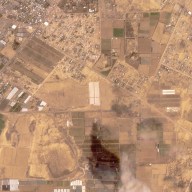It’s hard to say if there’s a dark side to these brightly coloured cookie sheets and spatulas.
You won’t dig up a lot of safety information about silicone … yet.
Health Canada says, “Silicone rubber does not react with food or beverages, or produce any hazardous fumes.”
But Health Canada also stands by the rationale that the fact that lab rats exposed to perfluorooctanoic acid (PFOA) were likely to get cancer doesn’t mean non-stick products necessarily cause cancer in humans.
Silicone is a synthetic rubber that contains bonded silicon and oxygen. It’s a natural element that is abundant in sand and rock.
Silicone bakeware is known for its heat-resistant and rubber-like qualities, and is safe for the oven and freezer. It is touted as being stable or inert, not changing the flavour or releasing odours that might affect food quality.
Not only is it believed to have low toxicity and thermal stability, it’s also easy to clean and is non-stick. One safety tip I repeatedly came across is to use food-grade silicone products at recommended temperatures — about 220 degrees C or 428 degrees F.
When it comes to eco-friendliness, silicone bakeware allows you to replace disposables like paper muffin tins and parchment paper.
I haven’t heard of recycling depots that accept silicone products, but keep your eyes open because it doesn’t biodegrade.
For now, silicone is a safer alternative to non-stick cookware treated with PFOA. I’m also a huge fan of cast iron and glass cookware and bakeware.

Lindsay Coulter gives you the straight goods on living green. Send your questions to queenofgreen@metronews.ca. For more great tips, visit The David Suzuki Foundation at davidsuzuki.org.
















